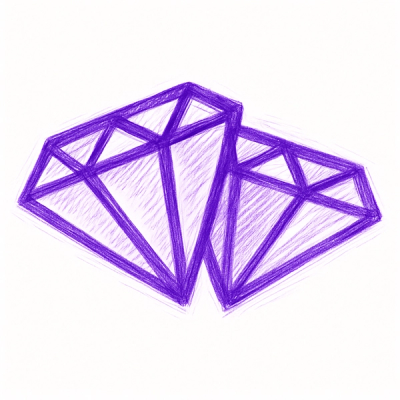
Research
Malicious npm Packages Impersonate Flashbots SDKs, Targeting Ethereum Wallet Credentials
Four npm packages disguised as cryptographic tools steal developer credentials and send them to attacker-controlled Telegram infrastructure.
component-material
Advanced tools


Material is a React utility that helps you compose and modify materials in react-three-fiber and threejs.
yarn add component-material
import Material from 'component-material'
function CustomMaterial(props) {
return (
<Material
{...props}
// 1️⃣ declare uniforms with the correct type
uniforms={{
r: { value: 1, type: 'float' },
g: { value: 0.5, type: 'float' },
b: { value: 0, type: 'float' },
}}>
<Material.Frag.Body
// 2️⃣ Access the uniforms in your shader
children={`gl_FragColor = vec4(r, g, b, 1.0);`}
/>
</Material>
)
}
function Sphere() {
return (
<mesh>
<sphereBufferGeometry />
<CustomMaterial />
</mesh>
<Material/>fromBy default Material extends three's MeshPhysicalMaterial. If you want to extend a different material just use the from prop passing the desired material constructor.
<Material from={THREE.MeshPhongMaterial} />
uniformsUniforms used inside shaders can be defined via the uniforms prop as follows
<Material
uniforms={{
myUniform1: { value: 0, type: 'float' },
myUniform2: { value: [0, 1], type: 'vec2' },
}}
/>
This will also create setters and getters for the uniforms automatically, allowing you to mutate them using props and effectively making the material reactive:
function CustomMaterial({ color }) {
return (
<Material
uniforms={{ color: { value: color, type: 'vec3' } }}
color={color} // color uniform will have the value of the color prop
/>
head tag.varyingsVarying variables can be defined directly inside the shader head tag or they can be declared as prop:
<Material
varyings={{
myVarying1: { type: 'float' },
myVarying2: { type: 'vec2' },
}}
/>
This is equivalent to adding this code to both your vertex and fragment shaders heads:
float myVarying1;
vec2 myVarying2;
head tag.The Frag and Vert tags have the function of injecting the shader text, passed as children, into the preconfigured shader of the threejs material. Let's see what it means with an example:
<Material uniforms={{ time: { value: 0, type: 'float' } }}>
<Material.Frag.Head
children={`
float quadraticInOut(float t) {
float p = 2.0 * t * t;
return t < 0.5 ? p : -p + (4.0 * t) - 1.0;
}`}
/>
<Material.Frag.Body
children={`
gl_FragColor.a = gl_FragColor.a * quadraticInOut((sin(time) + 1.0) / 2.0);`}
/>
In the code above the Frag.Head component adds an easing function quadraticInOut to the fragment shader of the material, prepending it before the main function of the shader.
The Frag.Body component instead adds a line of code that modify the gl_FragColor alpha value, appending it after the last operation of the main function.
In particular, if we take as an example the fragment shader of the MeshPhysicalMaterial, Frag.Head prepends the code before this shader line, Frag.Body instead posts the code after this shader line (the dithering_fragment chunk).
The same goes for the Vert component, which however acts on the vertex shader. In particular, Vert.Head prepends the code to this shader line, while Vert.Body appends the code to this shader line (the project_vertex chunk).
It is possible to inject the code after a particular chunk just by doing
<Material.Frag.my_chunk children={`// my custom shader`} />
where my_chunk must be replaced with the name of the chunk concerned.
If we wanted to insert some code just after the emissivemap_fragment chunk (here the reference for the MeshPhysicalMaterial) then just use the following code
<Material.Frag.emissivemap_fragment children={`// my custom shader`} />
replaceChunkThe replaceChunk prop is a boolean that allows you to completely replace the chosen chunk, so instead of append the custom shader code after the chunk it will be replaced directly.
<Material.Frag.emissivemap_fragment replaceChunk children={`// my custom shader`} />
The Common tag is useful in case vertex shader and fragment shader share some functions.
❌ If both the fragment shader and the vertex shader share the easing function quadraticInOut, instead of writing
<Material.Vert.Head
children={`
float quadraticInOut(float t) {
float p = 2.0 * t * t;
return t < 0.5 ? p : -p + (4.0 * t) - 1.0;
}`}
/>
<Material.Frag.Head
children={`
float quadraticInOut(float t) {
float p = 2.0 * t * t;
return t < 0.5 ? p : -p + (4.0 * t) - 1.0;
}`}
/>
✅ we will write
<Material.Common
children={`
float quadraticInOut(float t) {
float p = 2.0 * t * t;
return t < 0.5 ? p : -p + (4.0 * t) - 1.0;
}`}
/>
FAQs

The npm package component-material receives a total of 348 weekly downloads. As such, component-material popularity was classified as not popular.
We found that component-material demonstrated a not healthy version release cadence and project activity because the last version was released a year ago. It has 1 open source maintainer collaborating on the project.
Did you know?

Socket for GitHub automatically highlights issues in each pull request and monitors the health of all your open source dependencies. Discover the contents of your packages and block harmful activity before you install or update your dependencies.

Research
Four npm packages disguised as cryptographic tools steal developer credentials and send them to attacker-controlled Telegram infrastructure.

Security News
Ruby maintainers from Bundler and rbenv teams are building rv to bring Python uv's speed and unified tooling approach to Ruby development.

Security News
Following last week’s supply chain attack, Nx published findings on the GitHub Actions exploit and moved npm publishing to Trusted Publishers.